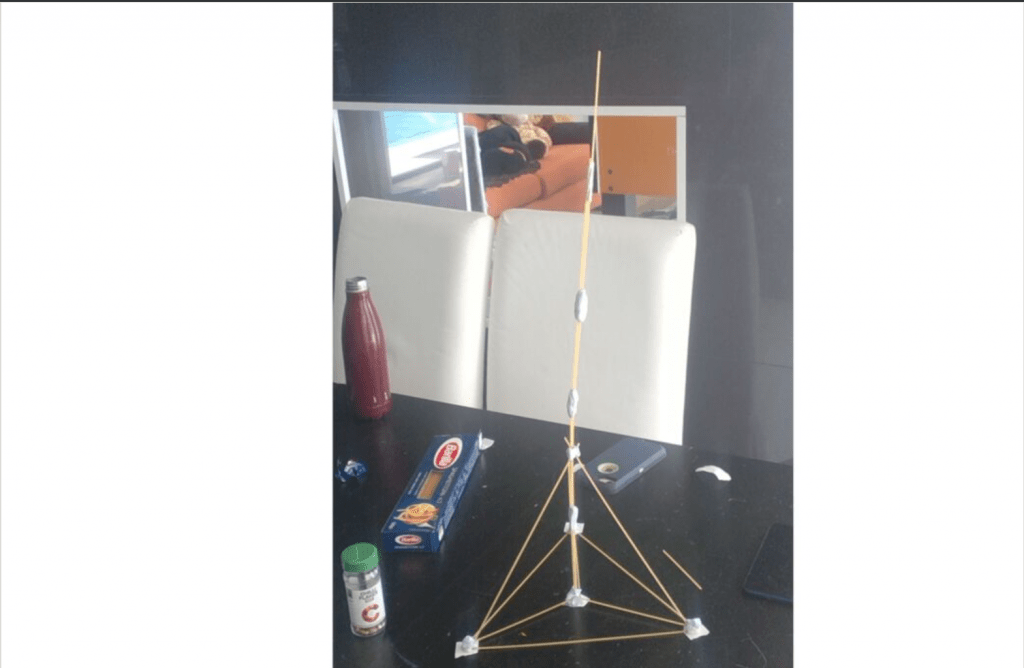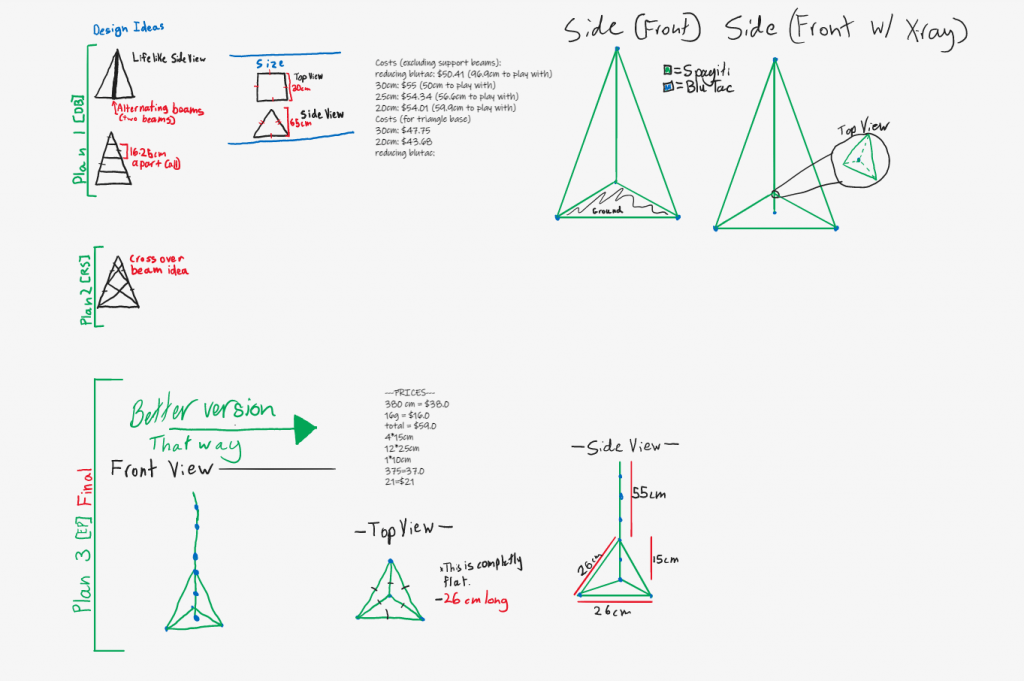
In year 9 I worked with my peers to create an earthquake resistant tower/building, this tower was to be made entirely from spaghetti, and that can withstand a major earthquake. We needed to design, build, and test a small-scale model that meets the following criteria:
1 Is quick and easy to assemble
2 Has a minimum height of 60 cm
3 Has a maximum base of 30 cm x 30 cm
4 Remains standing after an earthquake, as simulated by shaking a table for 10 seconds
5 Is constructed from the materials supplied by your teacher
6 Costs less than $60 to build, given the material costs listed below
7 The model cannot be attached to the table in any way.
The materials that we were allowed to use and their prices:
1 Spaghetti ($1 per 10 cm)
2 Blu Tack ($1 per gram)
3 Ruler
Capabilities and how I demonstrated them:
I demonstrated Organisation by at the start of the week when this task was started, I planned a get-to-gather with the group. Intentionally to set us up for the whole task via being able to attempt to build various types of buildings without a money limit, this proved extremely effective in the long run, we were always very far ahead from the class and were finishing side tasks when they were being allocated to us. I was also the person who setup all of the [MS] Whiteboards, and PowerPoints.
I demonstrated Problem Solving by being able to work around multiple problems, one of these problems were, Issues with building stability and design, there are many ways that we can build buildings to help counteract an earthquake, some of these things that we can build are:
a) Bottom heavy, keep most of the weight on the ground, this reduces swaying and load on support beams.
b) Connections to the ground are very important, we need to maximise the amount of connections to the ground.
c) The building needs to be flexible, if the building is rigid and moves all on it’s own and cannot copy the ‘flow’ of the earthquake then after a while the building will gain enough momentum to break crucial parts of the structure. This problem one of the more major parts of this project that absolutely trumped the speed of progress, but after a couple of dedicated hours I was able to completely revamp the whole design, as seen below in ‘Plan 3 [EP] Final’ in comparison to ‘Plan 1 [DB]’.

I demonstrated Effective Communication by always keeping in touch with my colleges, particularly whenever I would have a difficulty or a question that I couldn’t fix/find-out on my own. There were also times where the occurrence of miscommunication would change results and alter the ways that the group would input their answers to the stile sheet. This was most prominent when one person would be away at something else and not in the classroom for the tests. To combat this, I would regularly send emails to the group members explaining in depth what happened on the day that they were gone, and what we did. This turned out very helpful, as miscommunication would rapidly decrease, becoming near non-existent.
Conclusion
To conclude this project our team finished the design of the building that was able to withstand more than a magnitude 10 earthquake, it was not falling over or getting to the point where it was going to break, no matter how hard the table was shook the building wouldn’t topple over or even break on the towering part. We thought this would be the first part of the building to break but in reality, it was stronger than the base. In fact, I believe that it was the best building in the whole class, other building would break or most commonly not reach the height requirement. This project entailed many risks and difficulties, but ultimately, we were able to make a building that met all of the requirements and was able to withstand the earthquake, meaning that we successfully completed this project. We also learnt a lot about improving our capabilities and gaining extra knowledge in this area of engineering.
Raw Stile Worksheet with my answers:

Group Photo
Left: Jack Goddard (jack.goddard@allsaints.wa.edu.au)
Mid: Me, Dylan Baker.
Right: Riley Snook (riley.snook@allsaints.wa.edu.au)